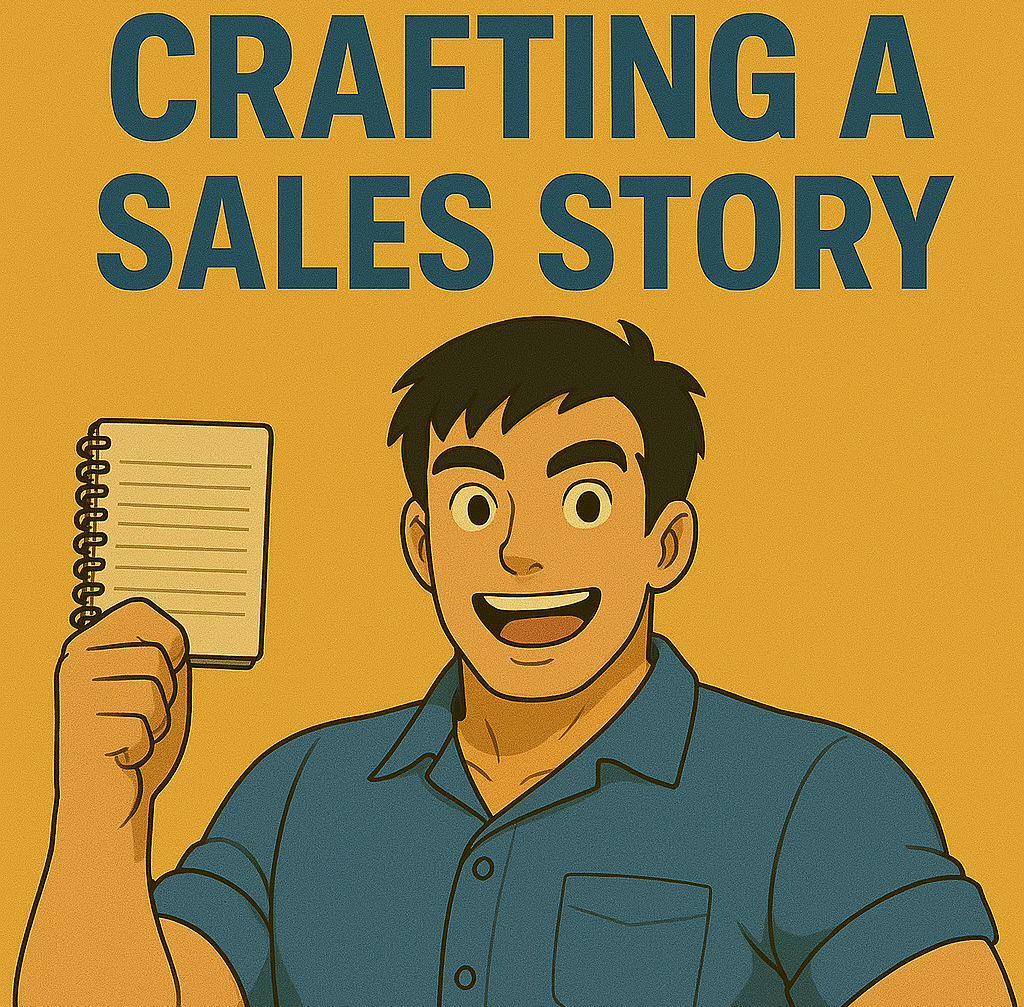Crafting a Sales Story That Converts

A compelling sales story is the difference between being ignored and becoming an industry leader.
But remember: your prospect doesn’t care about your product.
They care about what it does for them.
The best sales stories aren’t about you—they’re about turning your prospect into the hero of their own journey.
Here’s how to craft a story that resonates, differentiates, and closes deals effortlessly.
Why Traditional Sales Pitches Fail (and What to Do Instead)
Most pitches start with “Here’s what we do…” or “Our company was founded in…”. But prospects don’t care about your history, your features, or your awards.
They care about three things:
- Do you understand my problem?
- Can you solve it better than anyone else?
- Is it worth the investment?
A sales story flips the script.
It starts with their pain, positions your solution as the catalyst for their success, and ends with them envisioning a better future.
Think of it as the “gift wrap” that makes your offering irresistible.
The Anatomy of a Winning Sales Story: 3 Critical Building Blocks
Every great sales story answers three questions in this exact order:
1. Their Issues: “I Feel Your Pain”
Start here, always. Lead with the challenges, frustrations, or missed opportunities your prospect faces. This builds empathy and qualifies interest upfront.
- Example:
“X companies turn to us when they are struggling with [specific pain: e.g., losing customers to competitors due to slow service]. They’ve tried [common solutions], but still face [consequences: e.g., declining retention rates].”
By articulating their pain, you signal that you “get it”—and separate serious prospects from casual browsers.
2. Your Offerings: “Here’s How We Fix It”
Now, introduce your solution—but frame it as the bridge from their current struggle to their desired outcome. Focus on results, not features.
- Example:
“We help companies like yours [specific outcome: e.g., reduce customer wait times by 50%] using [solution: e.g., AI-powered customer service automation]. This means [tangible benefit: e.g., higher retention, happier teams, and 20% revenue growth].”
3. Your Differentiators: “Why We’re the Best Partner for This”
Here’s where you justify premium pricing. What makes you unique? Is it your expertise, proprietary technology, or unmatched ROI? Be specific.
- Example:
“Unlike [competitors], we [differentiator: e.g., use bespoke AI tools], which means [unique value: e.g., you’ll never lose a customer to slow response times again].”
The 60-Second Sales Story Template
Here’s how to structure your story for maximum impact:
- Hook (5 seconds): “We work with [ideal client] who struggle with [specific pain].”
- Problem Amplification (15 seconds): “This leads to [consequences]. Most try [common fixes], but still face [ongoing challenges].”
- Solution (20 seconds): “We [solution], delivering [results] in [timeframe]. For example, [client case study] achieved [metric].”
- Differentiation (15 seconds): “What sets us apart is [unique value]. Others [competitor weakness], but we [your strength].”
- Call to Action (5 seconds): “If this resonates, let’s explore how we can [specific next step].”
Putting It All Together: A Case Study
Client: A mid-sized e-commerce company struggling with cart abandonment.
Sales Story:
“We work with retailers like you who see high cart abandonment rates—often because of slow checkout processes.
Many try simplifying forms or offering discounts, but still lose 70% of potential sales.
Our platform reduces checkout steps from 5 to 1, using one-click biometric authentication.
Clients like [Brand X] cut abandonment by 40% in 3 months, boosting revenue by $2M annually.
Unlike basic plugins, our system integrates fraud detection and personalized upsells in real time—so you don’t just speed up checkout, you maximize every customer’s value.
If this sounds like the solution you’ve been missing, let’s schedule a demo tailored to your site’s traffic patterns.”
Practice, Refine, Repeat
A great sales story isn’t written—it’s honed.
Test it with prospects, track what resonates, and prune jargon.
Remember: The customer is the hero. You’re the guide with the map to their success.
Keep Crushing!
- Sales Guy
